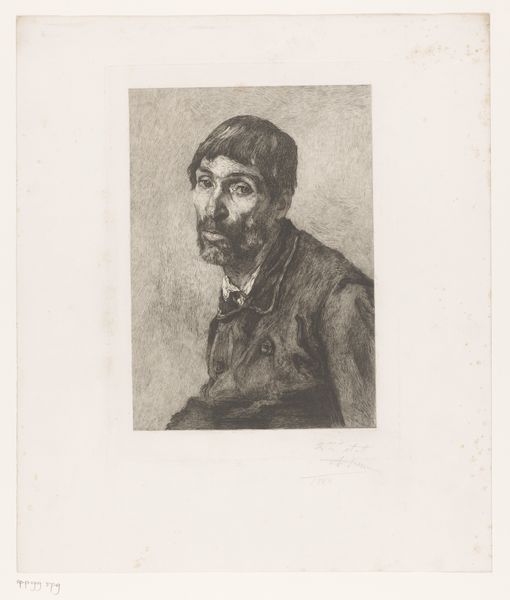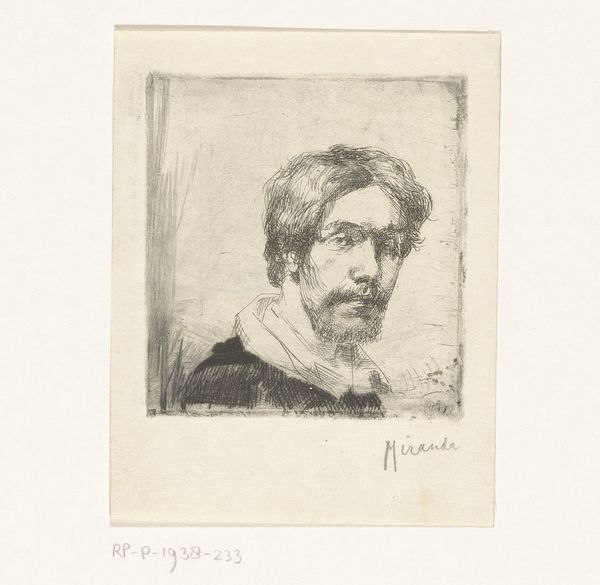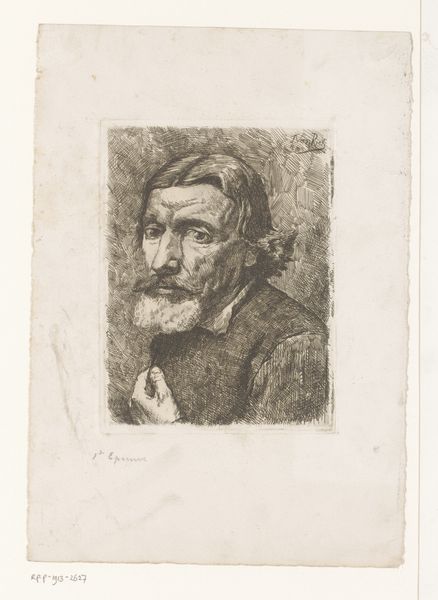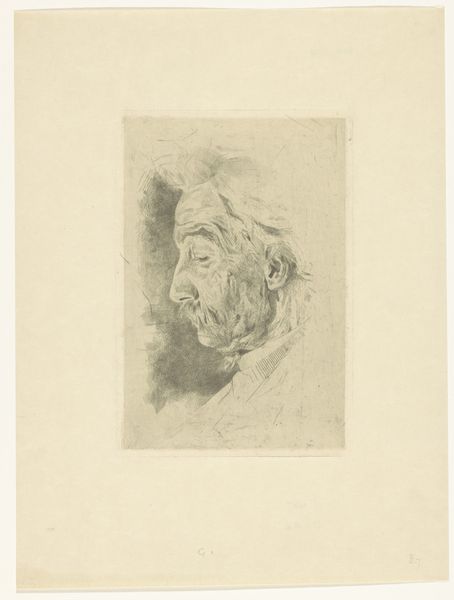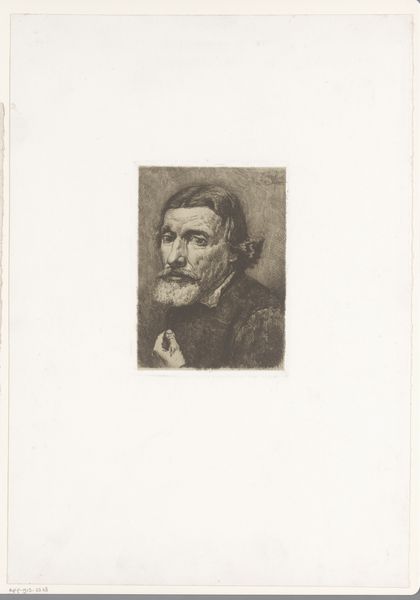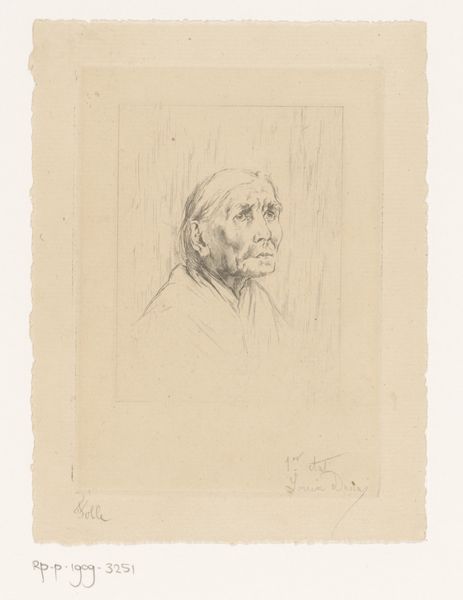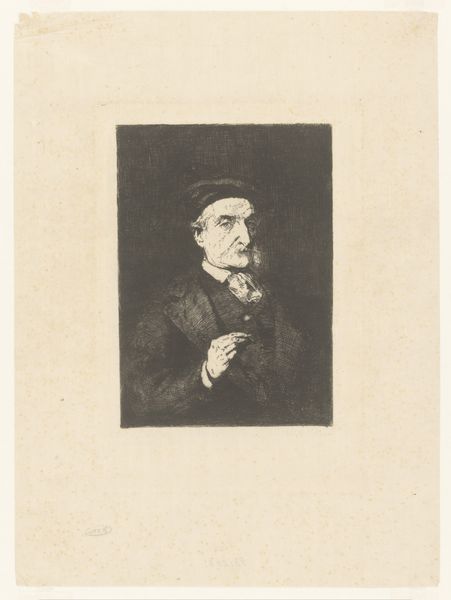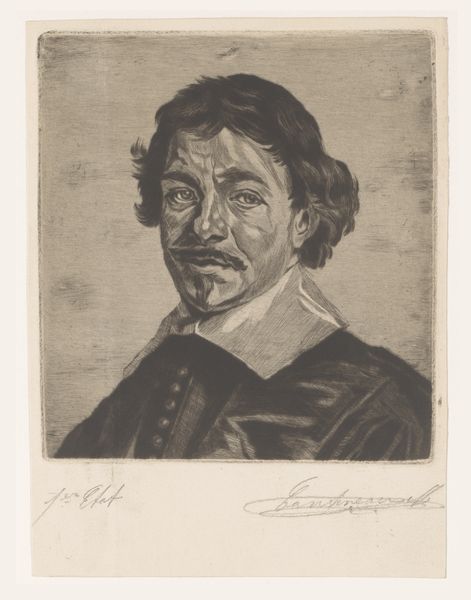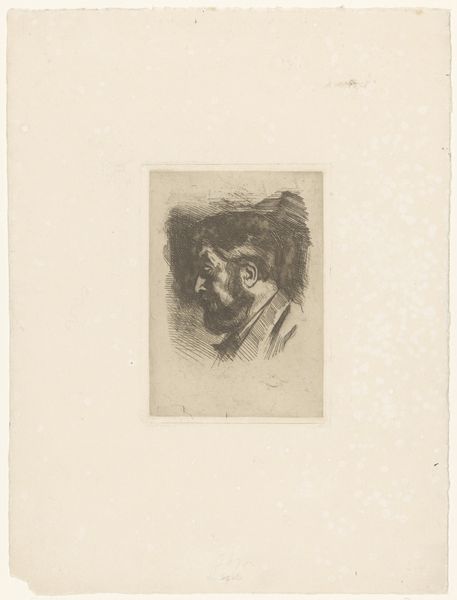
drawing, print, etching
#
portrait
#
drawing
# print
#
etching
#
realism
Dimensions: height 204 mm, width 135 mm
Copyright: Rijks Museum: Open Domain
Editor: Here we have a piece titled "Head of an Unknown Man, Possibly a Beggar," etched by Georges Montenez sometime between 1883 and 1913. The mood feels quite somber, doesn't it? What stands out to you about this print? Curator: The printmaking process is key here. Consider the labor involved in etching – the physical act of incising lines into a metal plate, applying ink, and transferring it to paper. This mechanical reproduction democratizes image production, shifting art away from unique, hand-crafted objects available only to the wealthy. The etching's capacity for producing multiple originals directly confronts older notions of value rooted in uniqueness and painterly skill. What is lost, and what is gained, through that labor? Editor: That's fascinating, I never considered it that way. The texture achieved through the etching is incredible. Do you think the choice of this medium specifically enhances our understanding of the subject's potential social status, his "beggar" designation? Curator: Precisely! Think of the availability and cost of materials. Montenez chose a medium readily available and reproducible. He made a clear effort not to flatter or aestheticize poverty, to portray an unvarnished view. Editor: It brings art to the masses in both subject and method. How revolutionary for that time. Curator: And still very relevant today as we examine the economic structures that shape art creation and reception. Editor: I appreciate the connection of the method with its potential to serve underserved populations; this piece really shows how form embodies its context. Curator: Indeed, art is so much more than what's on the surface; this etching, in its materials and process, tells a profound story of labor, class, and the changing landscape of art production.
Comments
No comments
Be the first to comment and join the conversation on the ultimate creative platform.
